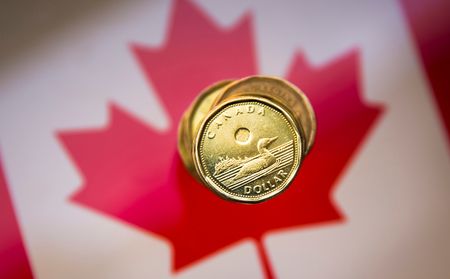By Ismail Shakil and Steve Scherer
OTTAWA (Reuters) -Canada’s economy expanded slightly in November, matching expectations, and likely stalled in December, data showed on Tuesday, broadly in line with the Bank of Canada’s expectations for the economy to flatline during the first half of this year.
November gross domestic product (GDP) rose 0.1% in November, Statistics Canada said, and was likely flat in December, according to a preliminary estimate.
“The flash estimate for December suggested that there was little if any growth during the final month of the year. That aligns with our view that the economy is likely stalling,” said Royce Mendes, head of macro strategy at Desjardins.
In December, gains in the retail, utilities, and public sectors were offset by decreases in sectors including wholesale, finance and insurance, Statscan said.
Annualized gross domestic product likely gained 1.6% in the fourth quarter, above the Bank of Canada’s 1.3% forecast. If the flash estimate proves correct, the economy expanded 3.8% in 2022 from the previous year, above the central bank’s 3.6% forecast.
“Today’s data show that the Canadian economy continues to cool, but not as yet shift into reverse, in the face of rising interest rates,” Andrew Grantham, senior economist at CIBC Capital Markets, said in a note.
The Canadian central bank has raised its key interest rate at a record pace of 425 basis points in 10 months to cool the economy and bring inflation down. After the latest rate hike last week, the Bank of Canada said it would likely hold off on further increases.
Last week, the central bank said the economy would stall and could tip into a mild recession during the first half of this year.
“The overriding message is that the economy is just managing to keep its head above water, which squarely fits with the Bank of Canada’s view,” said Doug Porter, chief economist at BMO Capital Markets.
Canada’s service-producing sector grew 0.2% in November, buoyed by a third straight month of gains in transportation and warehousing. The goods-producing sector contracted 0.1% in November, dragged down by declines in the construction and manufacturing industries.
The Canadian dollar was trading 0.2% lower at 1.3405 to the greenback, or 74.60 U.S. cents, after clawing back some of its earlier decline.
(Reporting by Ismail Shakil and Steve Scherer in Ottawa; Additional reporting by Dale Smith; Editing by Paul Simao and Mark Porter)

